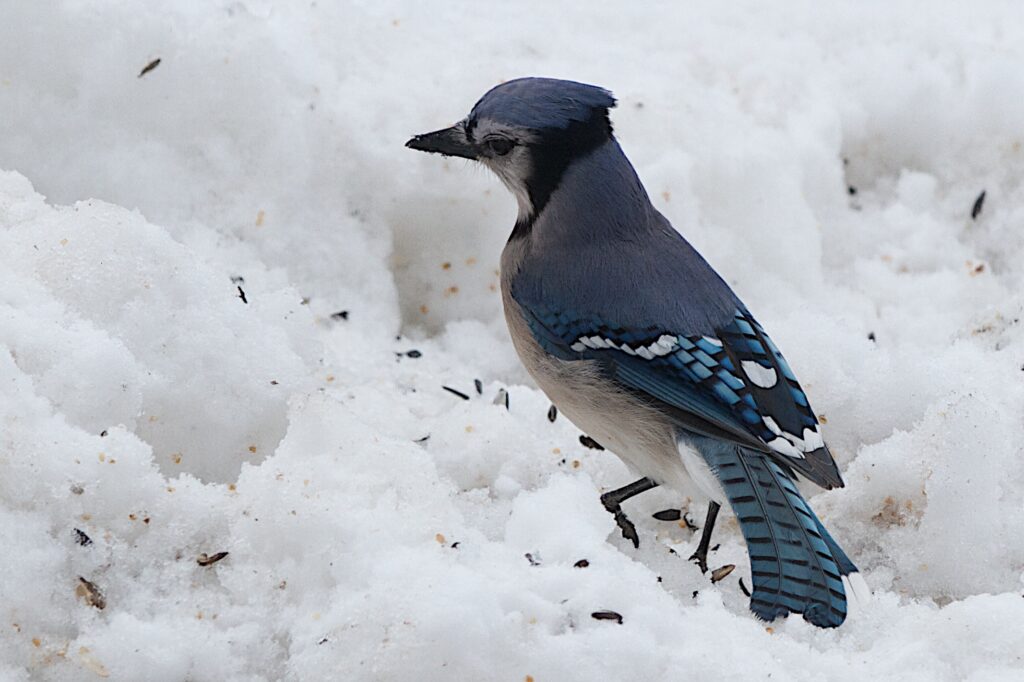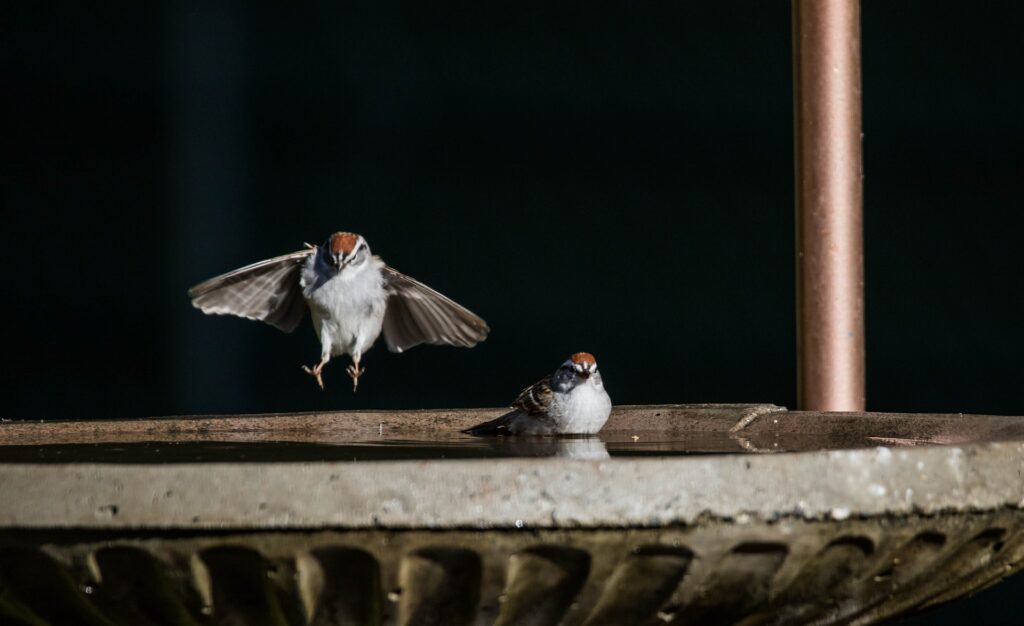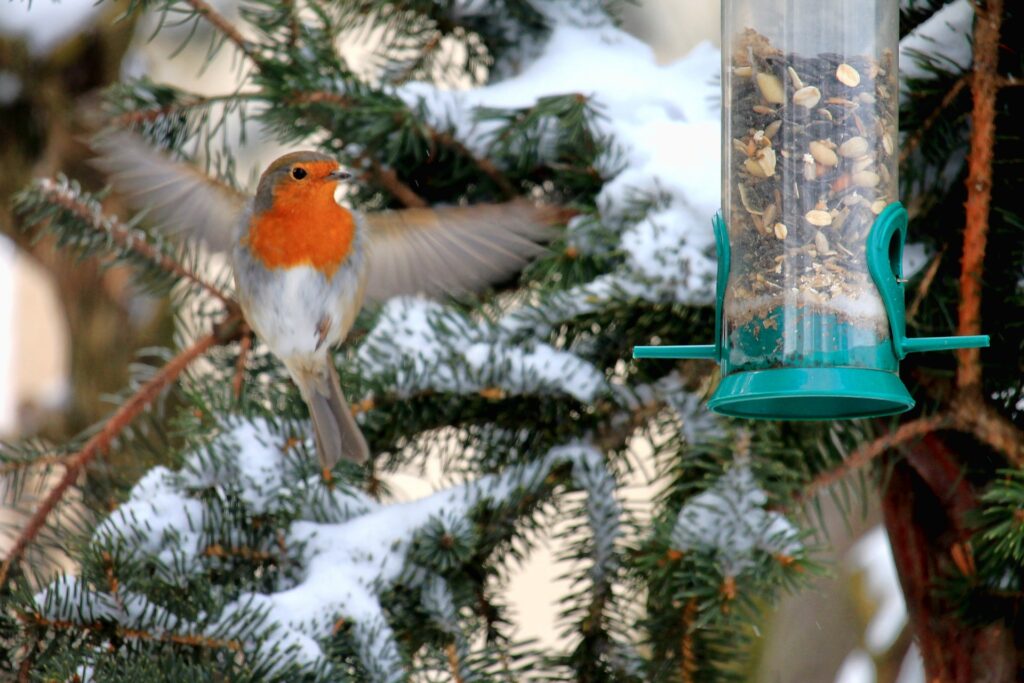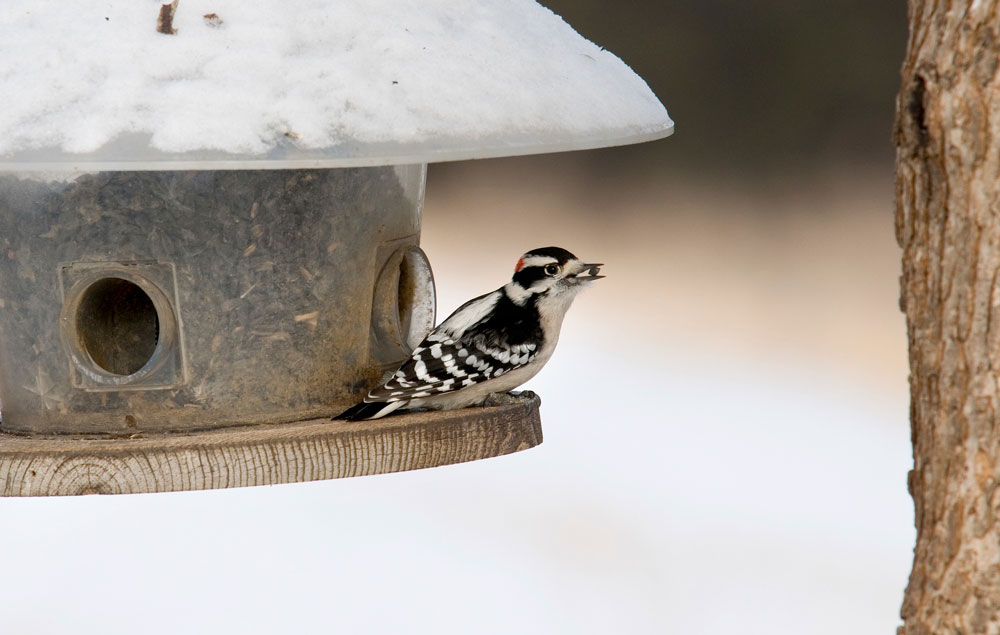You may be surprised to hear that birds need water, not just in the heat of summer, but all year long. Yes, even in the dead of winter, when it’s often snowy and icy weather.
This is especially true in Western states, as our drought-ridden climate makes water tough to find for birds in every season. Read on to find out why wild birds need water even when there’s snow on the ground, how we can offer water even in freezing conditions, and what else we can do to help birds survive—and thrive—in winter.
Why Birds Need Water in Winter

Just like any other time, birds need water in winter for drinking and bathing. In fact, it’s especially important in winter for birds to find water, as many natural sources have frozen solid. On top of this, birds are expending more energy than usual at this time, flying longer distances to look for food and water sources, which can prove hard to find. They also need to stay alert for predators—so it’s no time for a winter hibernation! And many are raising young, migrating, and engaging in other bird behavior that depletes their already waning energy resources.
At a time where birds are expending more energy than usual to survive, they’re looking for temperate water sources, like birdbaths and fountains with fresh or heated water. Birds must drink at least twice a day to survive. And since a bird’s feathers function as both insulation and transportation, they also need to bathe regularly to keep their feathers clean and free of snow and ice.
Can’t Birds Just Eat Snow?

The short answer is yes…and no. It’s true that birds do use their body heat to melt snow for drinking and bathing. However, this takes a lot of energy—and remember, energy is a scarce resource in cold weather. If wild birds can’t find water from natural sources, like ponds and lakes, they may be in trouble. They either need to fly to a warmer climate (which also requires energy), or look for manmade water features, like ponds, birdbaths, and fountains.
Offering Water to Birds in Winter

When we think of offering water to birds, we naturally think of water features like birdbaths and fountains. These are excellent water sources for birds in winter, with a few dos and don’ts to keep your feathered friends healthy and safe this season:
The DOs
DO use moving water to attract birds. Birds flying overhead look for water by sight and sound. A babbling brook or rushing river gets their attention fast, and you can mimic this movement in your own outdoor space. Add a decorative fountain with flowing water, or use a birdbath with a bubbler, and birds will flock to it in no time.
DO use one or more bird waterers. In addition to, or instead of, a birdbath, you can easily hang a waterer in your yard, garden, balcony, or deck. A waterer is great for those who don’t want—or don’t have the space for—a birdbath. And hanging two waterers during winter months makes it easy to maintain—you can clean one while keeping the other out and ready for the birds.
DO keep water fresh and clean. A dirty birdbath does more harm than good for our feathered friends. It spreads avian disease, which can prove fatal. The general rule of thumb is to clean your birdbath at least twice a week; this can be accomplished easily with a vinegar and water solution.
DO prevent water from freezing.Place your birdbath or fountain in a sunny area to keep it as warm as possible. You can also get a heated birdbath, which keeps water from freezing solid, and maintains it at a safe bathing and drinking temperature.
DO keep it shallow and add stones. Keep the water in your birdbath two inches deep at the most. Add stones, sticks, and other objects for wild birds to perch on as they preen and slate their thirst.
The DON’Ts
DON’T add chemicals. Just like chemicals in our drinking water can harm or even kill us, adding chemicals (salts, glycerin, anti-freeze, etc.) to your water feature is a no-no for birds.
DON’T stop at water. Yes, water is important, but winter bird feeding is just as vital for surviving the season. Hang one or more bird feeders with high-quality seed mixes, suet, and other avian favorites to help your local wildlife and attract more birds to your yard.
Join Chirp’s “Winter is for the Birds” Initiative!

If you’re reading this, you’re a bird enthusiast and nature lover like us. Join the Chirp family and our likeminded community in helping our local Big Bear birds brave the cold. Learn what birds need to stay healthy through harsh winter months, and where you can find all the resources you need (from wild bird-feeding products to well-sourced articles) to help. And don’t forget—we also have tons of fun activities (both live and virtual) planned for the entire family on our Activities page. We hope to see you soon—and thanks for being a part of the Chirp community!


